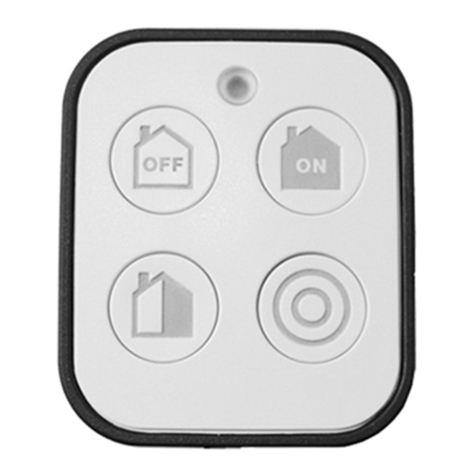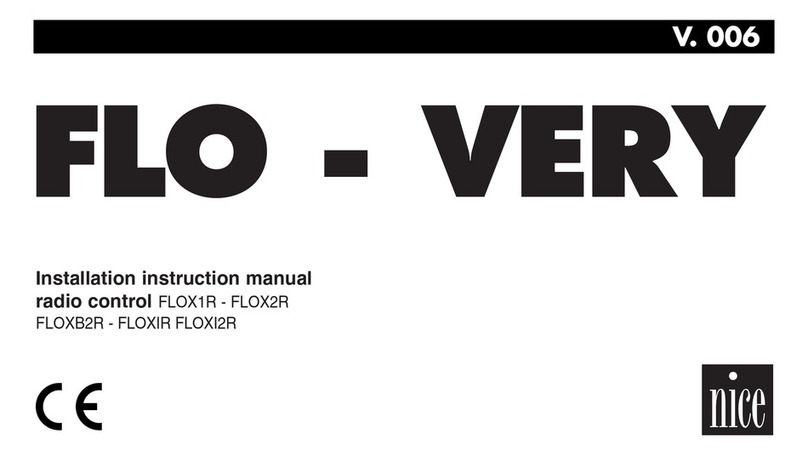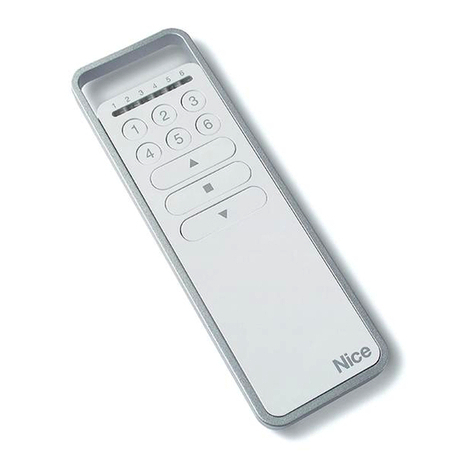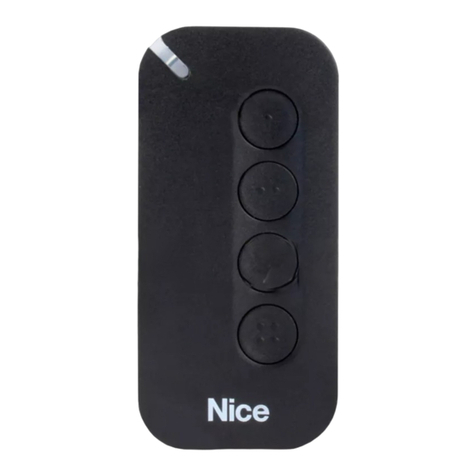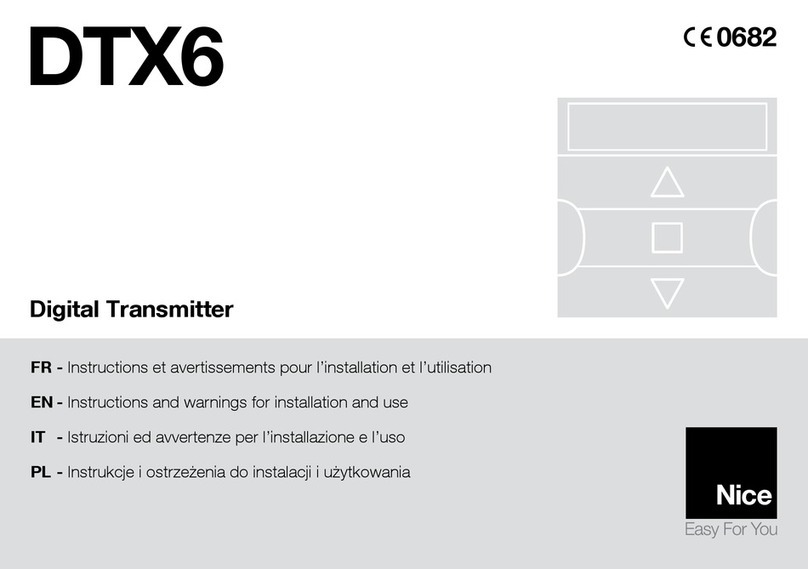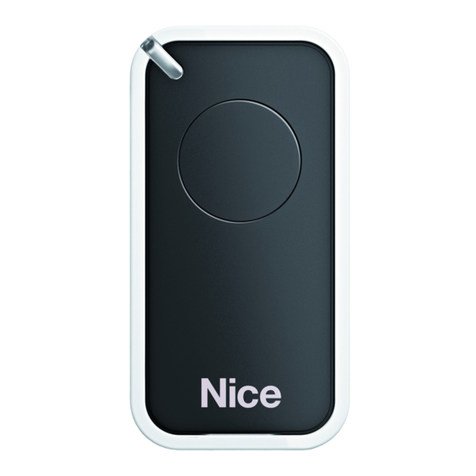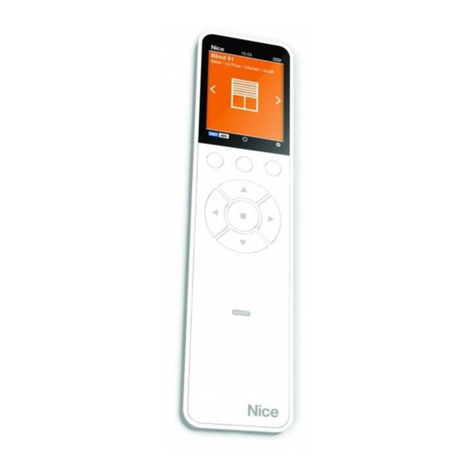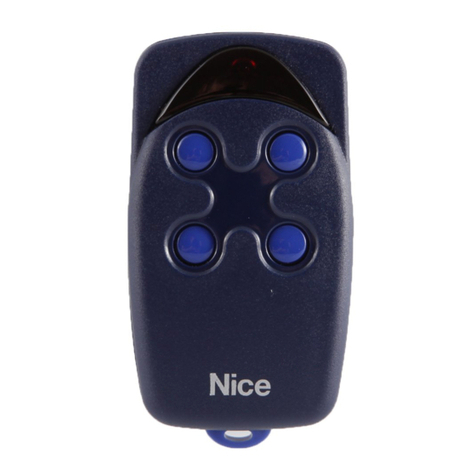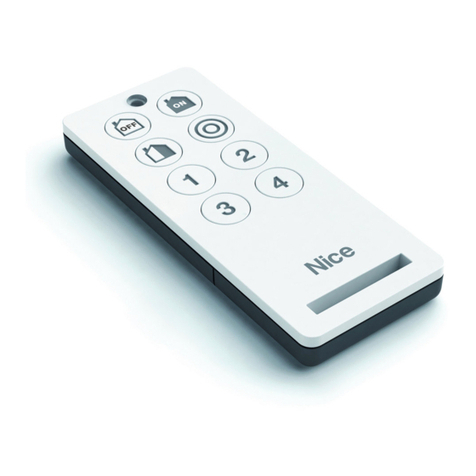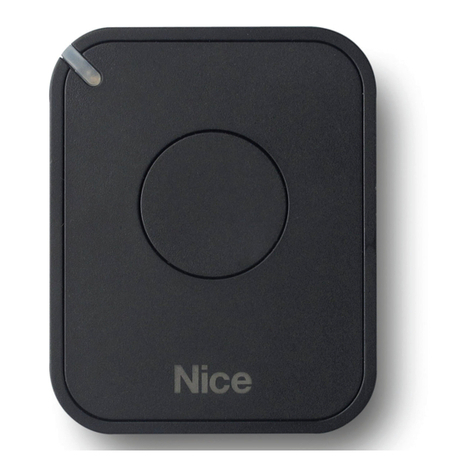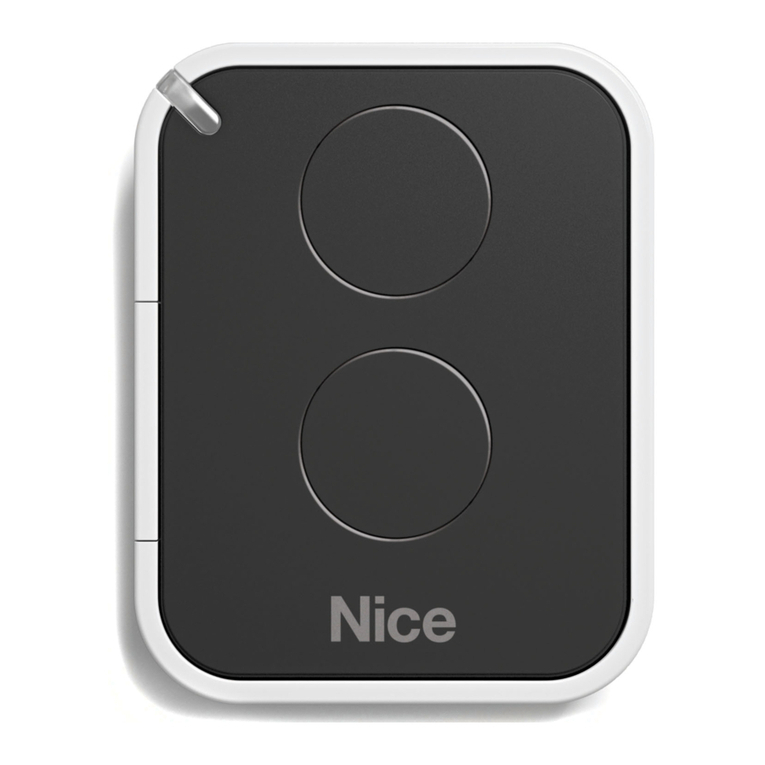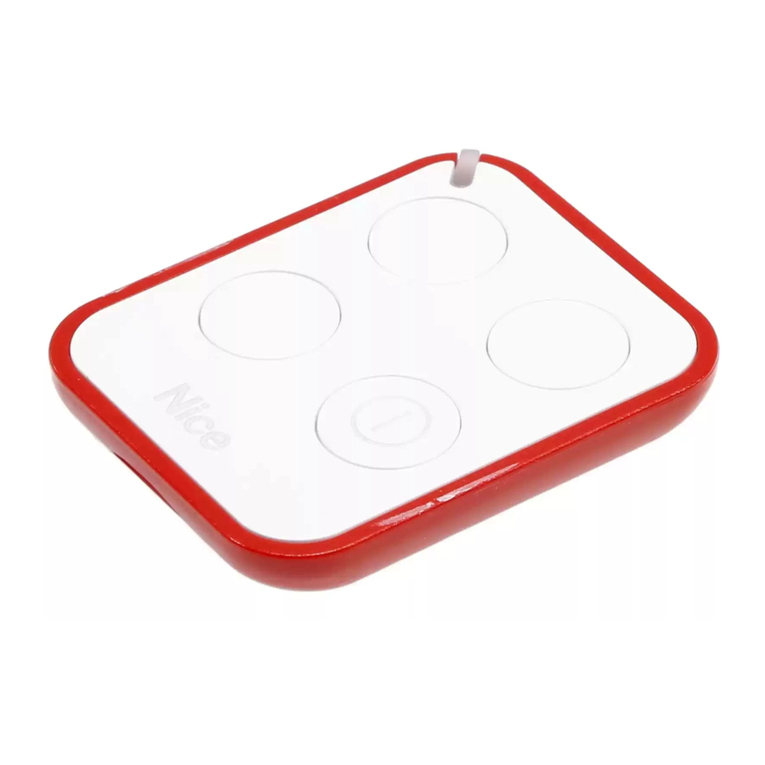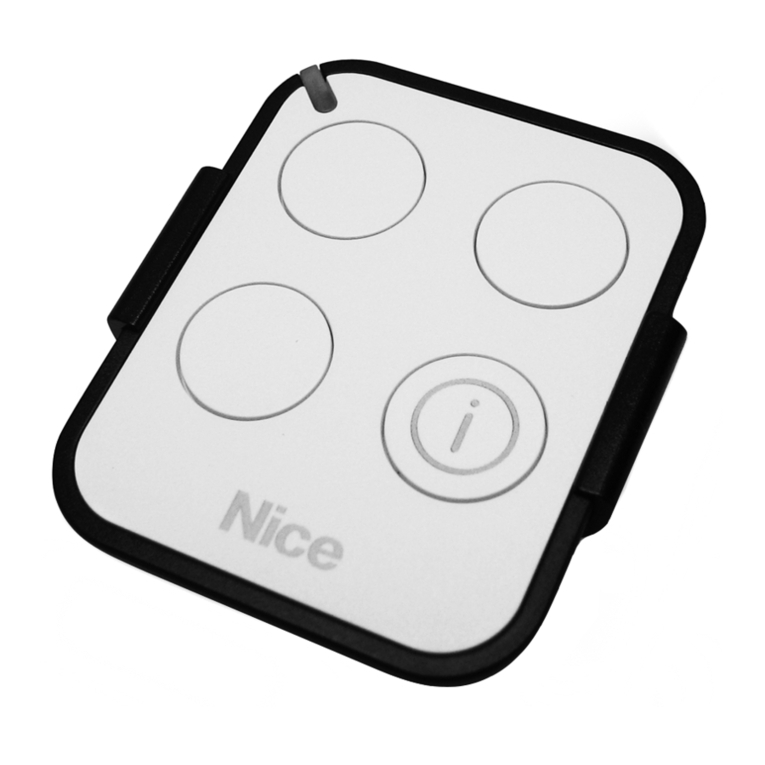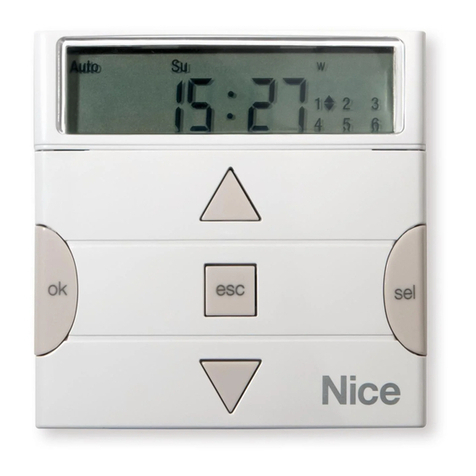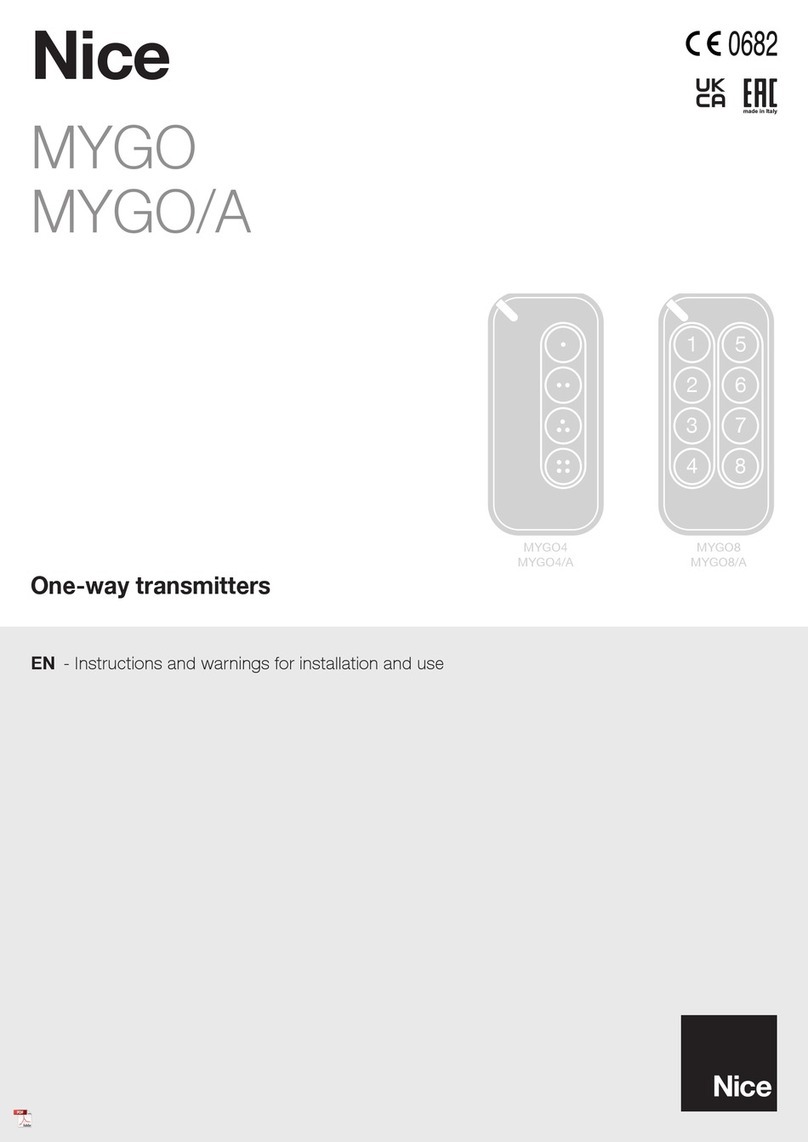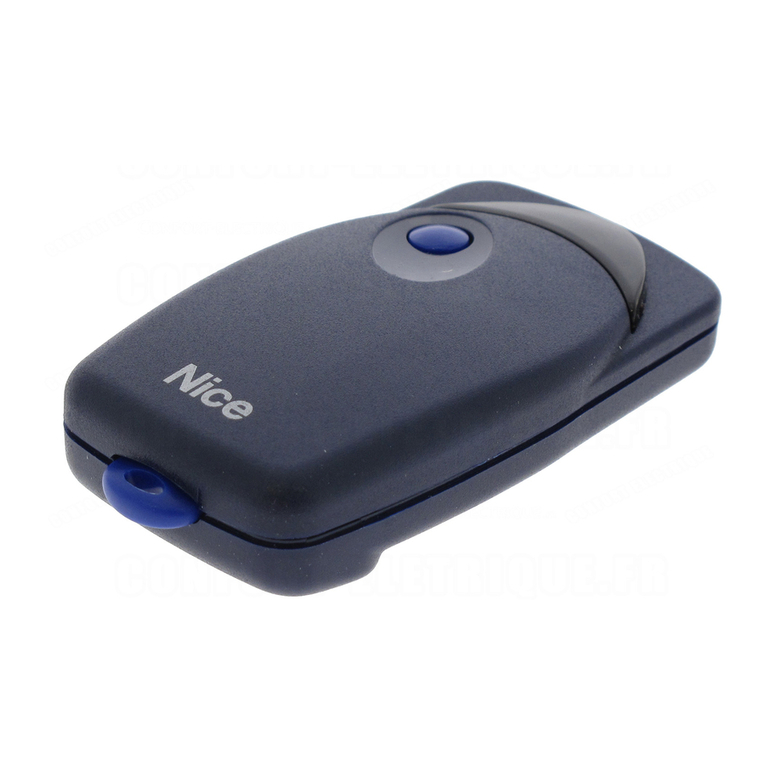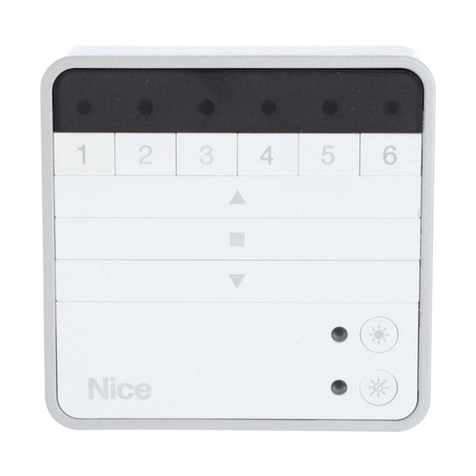1– English
ENGLISH
Complete instructions translated from Italian
1 - PRODUCT DESCRIPTION AND INTENDED USE
This product is a wall mounting radio transmitter belonging to the Era KRONO
series. The following models are available:
KRONO 6WW KRONO 1WW KRONO 1WC
Power supply 1 battery mains power
Transmission wireless wired
Channels 6 1
Installation onto a wall mount
(removable transmitter)
recessed into the
wall (fixed transmitter)
The transmitter is intended to control roll-up sunscreens, awnings and shutters. It
can be used for sending manual commands, or programmed to operate at set times
of the day throughout the week, for sending automatic commands; it can also be
programmed to send randomly timed commands (“Holiday” mode) to simulate the
presence of occupants in the home when no-one is present. Any use other than
those described in this manual is to be considered improper and prohibited!
2 - INSTALLING THE TRANSMITTER
2.1 Transmitter power supply and wall-mounting
• KRONO 1WW and KRONO 6WW only: see fig. 1, 2 and 3.
CAUTION – Before you install the wall mount definitively, make sure that the
automation receives the transmitted commands when the transmitter is fitted to
the mount. Warning! - The range of transmitters and the reception of receivers is
strongly affected by other devices (e.g. alarms, RF headphones, etc.) operating on
the same frequency in your area. In these cases, the manufacturer cannot provide any
guarantee regarding the actual range of its devices. To reduce this risk, do not install
the transmitter close to or in contact with metal structures, as they can significantly
reduce its range. Discharged batteries can also reduce the unit’s range by 20 - 30%.
• KRONO 1WC only: see la fig. 1, 2 and 4.
3 - SPECIFIC PRECAUTIONS FOR KRONO 6WW
READ CAREFULLY!
• The transmitter has six number keys. Each of these corresponds to a sin-
gle transmission channel which is independent of the others. When the
transmitter is memorized, one or more automations may be assigned to each
channel. This means that up to 6 groups of automations can be created, so
that one channel = one group.
• The automation groups are created when the transmitter is memorized, when
you are prompted to select to which channel you wish to assign the automa-
tion in question.
Once multiple automations have been assigned to different channels, thus
creating “automation groups”, you must consider the following when using
the transmitter:
a) before you send a command, you must select the group (or
groups) andhence the channel (channels) on which the command
is to be transmitted;
b) a command addressed to a group is executed simultaneously by all
automations in the group.
• The transmitter can control:
a) one automation group at a time, by selecting a channel and immediately
transmitting a command on it;
b) multiple automations groups at once, by first selecting several channels
and immediately transmitting a command on them.
4 - BASIC SETTINGS
When the transmitter is powered up for the first time, the system immediately asks
you to enter the basic parameters by running PROCEDURE 1.
If you wish to postpone this procedure, quit it by pressing ESC.
The basic parameters can be memorized or modified at a later time as follows:
– to set ALL the parameters: you must first run PROCEDURE 10 (cancels the
entire memory) and then run PROCEDURE 1.
– to change ONLY SOME of the parameters (previously memorized with Proce-
dure 1): run PROCEDURE 1.A.
5 - MEMORISING THE TRANSMITTER
To memorize the transmitter in the automation’s memory, run PROCEDURE 2.
Alternatively, you can run the procedure indicated in the automation’s manual, but
only where indicated as “MODE II” or “MODE 2”; before doing so, you must set the
transmitter to MAN mode (see Chapter 6).
6 - OVERVIEW OF THE TRANSMITTER’S
OPERATING MODES
The transmitter has 4 operating modes:
– PROG = PROGRAMMING mode
– AUT = AUTOMATIC mode
– MAN = MANUAL mode
– VAC = “HOLIDAY” mode (simulates the presence of occupants in the ho-
me)
For further information, refer to the tables in the section “4 transmitter
operating modes”.
• Each mode can be set by the user by setting the MODE switch to its 4 positions
(the display will show the symbol for the current mode).
• When a mode is set, it inhibits operation of the transmitter in its other modes.
7 - PROGRAMMING THE TRANSMITTER
The transmitter can be programmed with the following procedures:
• INITIAL BASIC PROGRAMMING
– Procedure 1 - basic settings.
– Procedure 2 - memorises the transmitter in the automation.
• PROGRAMMING EVENTS and other activities for events
– Procedure 3 - creates a new event.
– Procedure 4 - modifies an existing event.
– Procedure 5 - duplicates an existing event.
– Procedure 6 - disables or re-enables an existing event.
– Procedure 7 - definitively deletes an existing event.
• PROGRAMMING EXTRA FUNCTIONS
– Procedure 8 - password for preventing unauthorised access to Programming
mode.
– Procedure 9 - keypad lock for preventing unauthorised use of Manual mode.
– Procedure 10 - deletes the entire memory and restores the factory settings.
• “NFC” PROGRAMMING
– Procedure 11 - configuration with a smartphone and dedicated APP..
7.1 Precautions when creating a new event
• Before you program a new event, we recommend that you note the values you
wish to set each parameter to in Table B (at the end of the manual). The table is
very helpful for planning the events you wish to create and provides a log of exi-
sting events and their features.
• The transmitter can memorize up to 30 events.
• For the transmitter to execute the events, the “MODE” switch must be set to
“AUT” or “VAC”.
• The sequence of items in Procedure 3 (create a new event) is as follows.
– CHANNEL (KRONO 6WW only): selects the channel/s (using the numerical keys).
– TYPE OF MANOEUVRE: selects the manoeuvre: up (UP) or down (DOWN).
– PARTIAL MANOEUVRE (optional parameter): used to set the level for the partial
manoeuvre. The level can be set by specifying the time during which the motor
must function to bring the curtain to the desired point: value between 1 and 240
seconds (default setting: 5 seconds).
– DAY/S OF THE WEEKS: sets the day (or days/all days, as desired) on which the
transmitter is to execute the event.
– TIME OF EVENT: three options are available:
• “TIME”: sets the exact time at which the event is to be executed.
• “SUNRISE” or “SUNSET”: sets the advance (-0:01 minutes to -9:59 hours) or de-
lay (+0:01 minutes to +9:59 hours) relative to local sunrise or sunset, at which the
event is to be executed.
– CLIMATE SENSORS ON/OFF (KRONO 1WW and KRONO 6WW only): ena-
bles/ disables the climate sensors. For example: if an event has the SENSORS
function set to “ON”, it enables the automation to receive commands from the cli-
mate sensors when the event is executed. Reception remains enabled (ON) until
the transmitter executes an event which sets the SENSORS function to “OFF”.
– “HOLIDAY” FUNCTION (occupancy simulation): setting this function “ON”
in an event tells the transmitter that the event must be executed at random and
always different times of the day, relative to the time scheduled by the user for the
event. The function simulates the presence of people in the home even when no-
one is present.
– NAME OF EVENT: assigns a code (“E1” to “E30”) to the event being created.
7.2 Precautions when programming the extra functions
• Password (PIN) to prevent unauthorised access to Programming mode
You can create a 4 digit password (PIN) to prevent unauthorised persons using the
Programming environment. Once you have created a personal PIN (the product has
no PIN when it leaves the factory) the system will prompt you to enter the PIN when
you attempt to enter Programming mode by setting the MODE switch to PROG.
– To create or delete a PIN: run PROCEDURE 8.
– To enter a PIN (when prompted to do so), proceed as follows.
1. Set the MODE switch to PROG.
